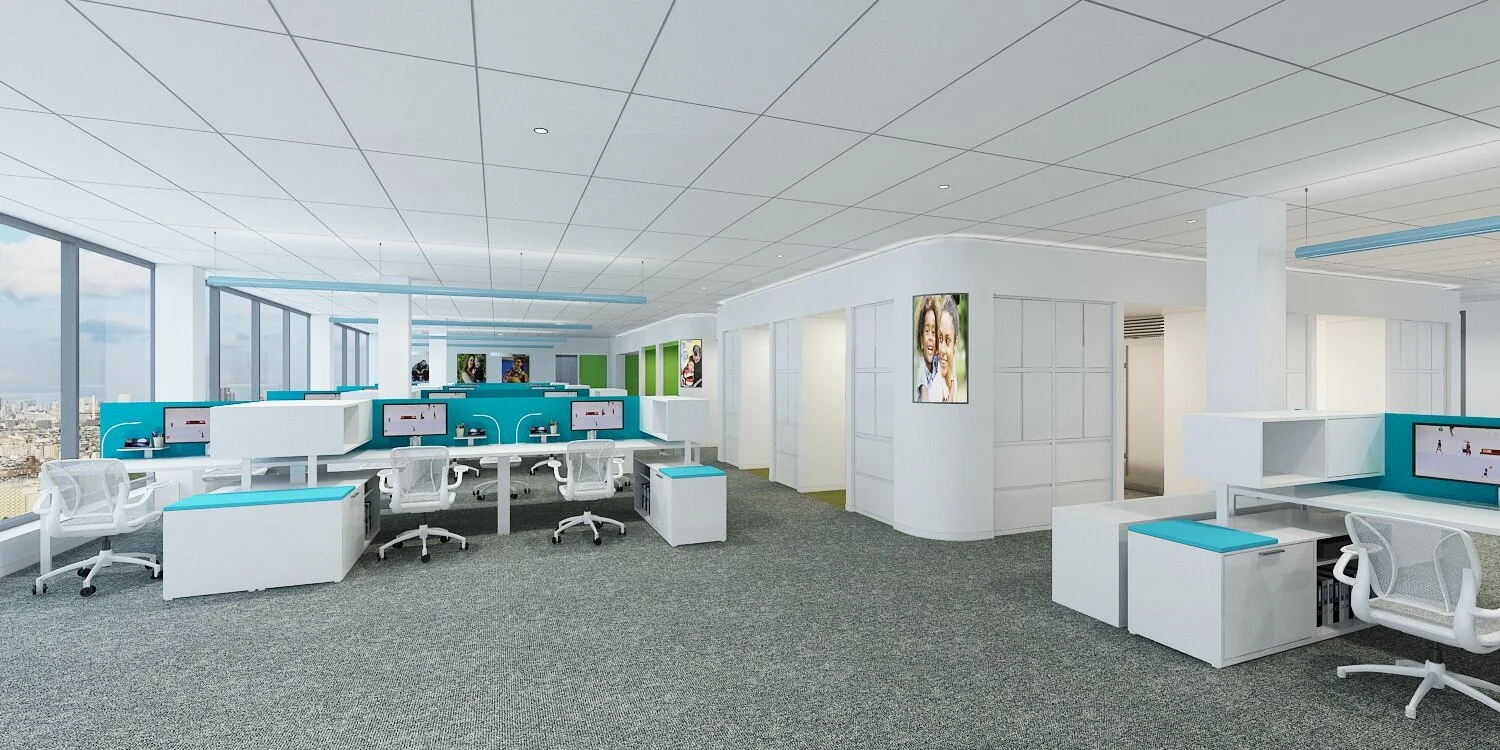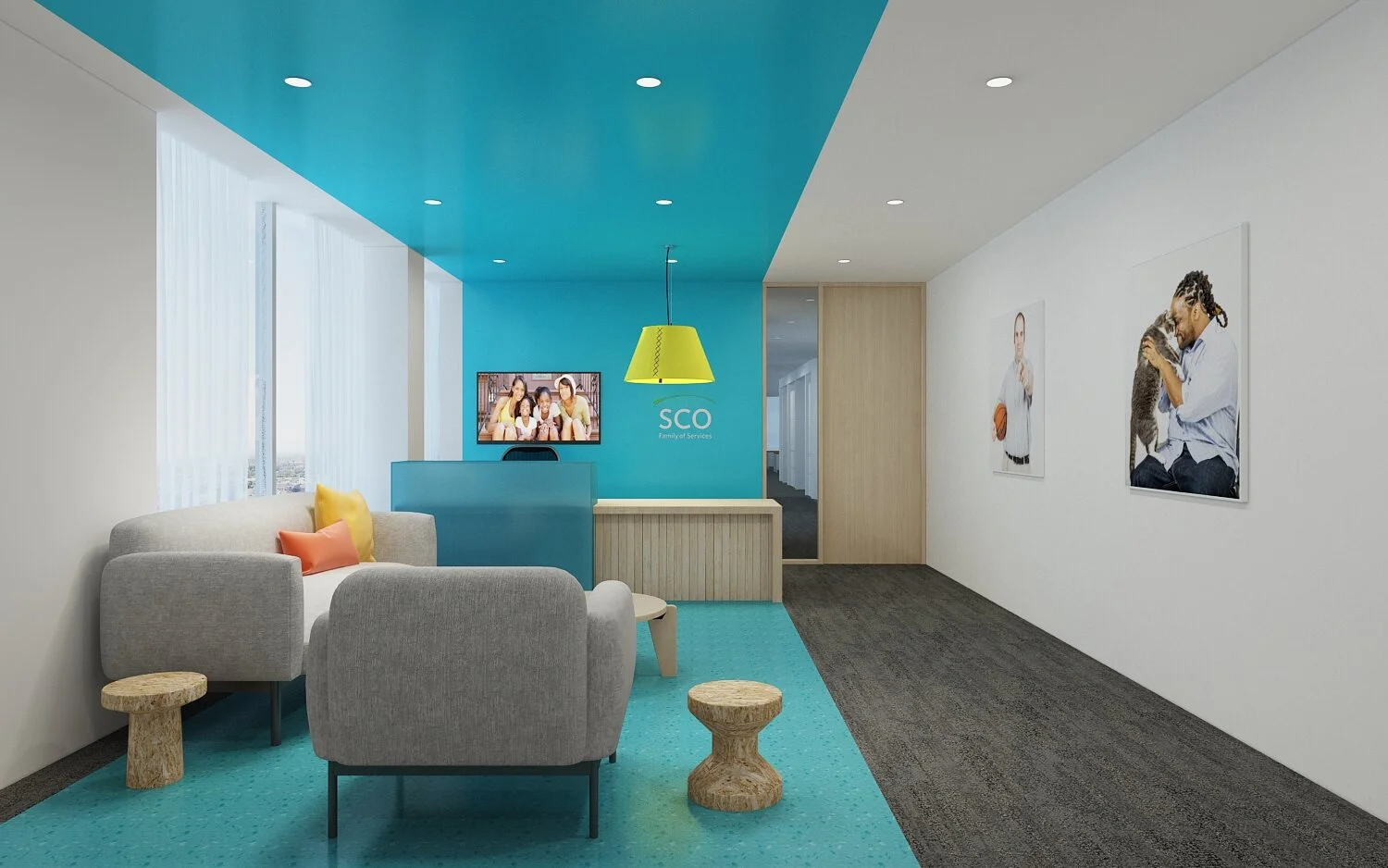Trauma-Informed Design
Speyer Legacy School
TRAUMA-INFORMED DESIGN:
CREATE SPACES THAT ARE WELCOMING & SAFE
AMBAR MARGARIDA, GUEST BLOGGER • JULY 2019
Research reveals that environments can increase or reduce our stress, which in turn impacts our bodies. What you are seeing, hearing, and experiencing at any moment is changing not only your mood, but how your nervous, endocrine, and immune systems are working. The stress of an unpleasant environment can cause you to feel uneasy, sad, or helpless. This in turn elevates your blood pressure, heart rate, and muscle tension, and suppresses your immune system. A pleasing environment can reverse that.
Therefore, when designing environments intended to host trauma-experienced individuals such as airports, hospitals, shelters, or nonprofits in the health, social, and legal services, a designer should be intentional about creating a space that is welcoming, calming, safe, and provides varying degrees of privacy.
NYU University Hub
The nonprofit social and legal services sector includes pro bono attorneys, individual and family services, residential care, job training, and community and housing developments. According to the Independent Sector and Urban Institute, this sector is one of the fastest growing in the industry. This means designers and architects will increasingly be designing spaces that serve this population and should consider trauma informed design as part of their design approach.
How might the physical environment promote a sense of safety and calm for clients and staff? The National Council for Behavioral Health recommends a few approaches:
Spatial Layout
If space is perceived as open, with clear sight-lines and few barriers, it will increase the sense of safety, as well as that of “spatial availability,” which mitigates a perceived sense of crowding.
A simple, linear, and easy to navigate space is calming.
Minimize unnecessary and overwhelming ambient noises.
Provide clear and consistent signage.
Columbia NewYork-Presbyterian Hospital, Children’s Emergency Department
Furniture
Arrangement of furniture needs to be considered for how it affects users’ sense of safety, perceived crowdedness, and relationship to staff (e.g. communicative or authoritative).
Sitting face-to-face across a desk or table may be perceived as confrontational, whereas sitting corner-to-corner invites conversation and interaction.
In waiting or common areas, orient seating so users are facing out from sheltering walls.
Do not overcrowd furniture and ensure adequate space to navigate around each piece.
When designing spaces and choosing fixtures, refer to the Principles of Universal Design to promote accessibility.
Visual Interest
Limit visual complexity, such as distracting patterns on the walls or flooring.
Sight lines should be unobstructed as much as possible to reduce perceived over crowding.
Too much visual complexity can increase stress and anxiety.
Natural light, clear sight-lines and SCO Family of Services organizational colors throughout their open work area in Brooklyn by Spacesmith
Light & Color
Ensure adequate lighting that does not buzz or flicker and that can be manipulated for those with light sensitivities and visual impairment.
Avoid deeply hued warm colors (i.e. red, orange, yellow) that may arouse negative emotions.
Use cool colors (i.e. blue, green, purple) that have a calming effect.
Lighter-colored rooms are perceived of as more open, less crowded (spatially available), and thus safer and more calming.
Avoid stark white walls.
The approachable reception area at SCO Family of Services by Spacesmith
Art
Art can create a visual distraction that alleviates stress and improves mood, comfort, and customer satisfaction.
Landscape paintings and nature photography are all associated with increased positive effect and comfort.
Avoid abstract work which can be “triggering” to some people.
Biophilic Design
Research shows that settings that include vegetation reduce stress, promote peace, tranquility, enhanced self-esteem, and a sense of mastery of the environment.
Plants perform an important biophilic function by connecting occupants to the natural world, which has been found to reduce stress and pain, and to improve mood.
Views of nature and landscape paintings, as well as indoor plants, are all associated with an increased positive affect and comfort.
Increase natural lighting, access to green spaces, and easy-to-care-for plants.
In my opinion, these design strategies lead to better spaces and can be considered when designing all types of environments.








